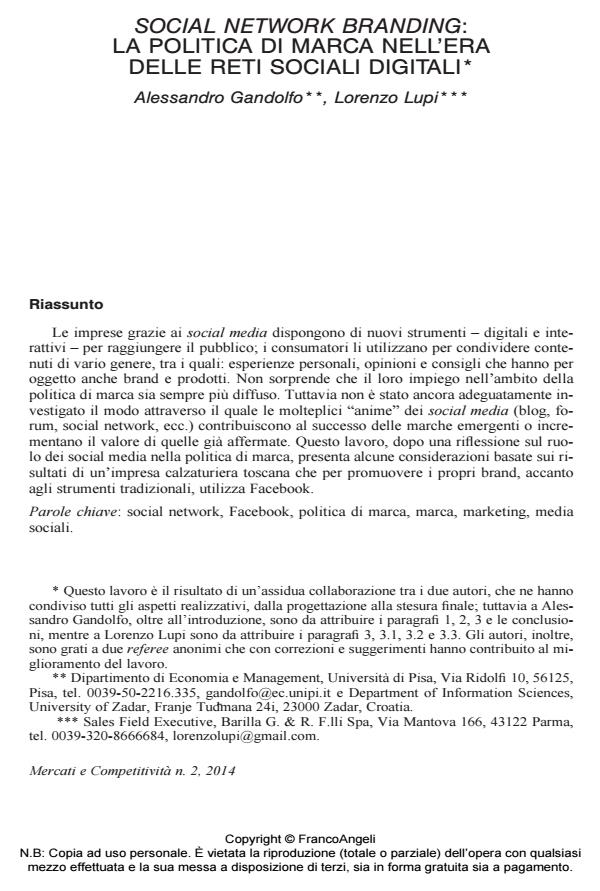Social network branding: la politica di marca nell’era delle reti sociali digitali
Titolo Rivista MERCATI E COMPETITIVITÀ
Autori/Curatori Alessandro Gandolfo, Lorenzo Lupi
Anno di pubblicazione 2014 Fascicolo 2014/2
Lingua Italiano Numero pagine 25 P. 151-175 Dimensione file 194 KB
DOI 10.3280/MC2014-002008
Il DOI è il codice a barre della proprietà intellettuale: per saperne di più
clicca qui
Qui sotto puoi vedere in anteprima la prima pagina di questo articolo.
Se questo articolo ti interessa, lo puoi acquistare (e scaricare in formato pdf) seguendo le facili indicazioni per acquistare il download credit. Acquista Download Credits per scaricare questo Articolo in formato PDF

FrancoAngeli è membro della Publishers International Linking Association, Inc (PILA)associazione indipendente e non profit per facilitare (attraverso i servizi tecnologici implementati da CrossRef.org) l’accesso degli studiosi ai contenuti digitali nelle pubblicazioni professionali e scientifiche
Le imprese grazie ai social media dispongono di nuovi strumenti - digitali e interattivi - per raggiungere il pubblico; i consumatori li utilizzano per condividere contenuti di vario genere, tra i quali: esperienze personali, opinioni e consigli che hanno per oggetto anche brand e prodotti. Non sorprende che il loro impiego nell’ambito della politica di marca sia sempre più diffuso. Tuttavia non è stato ancora adeguatamente investigato il modo attraverso il quale le molteplici "anime" dei social media (blog, forum, social network, ecc.) contribuiscono al successo delle marche emergenti o incrementano il valore di quelle già affermate. Questo lavoro, dopo una riflessione sul ruolo dei social media nella politica di marca, presenta alcune considerazioni basate sui risultati di un’impresa calzaturiera toscana che per promuovere i propri brand, accanto agli strumenti tradizionali, utilizza Facebook.
Parole chiave:Social network, Facebook, politica di marca, marca, marketing, media Sociali
- The Network Contract Chiara Bentivogli, Fabio Quintiliani, Daniele Sabbatini, in SSRN Electronic Journal /2013
DOI: 10.2139/ssrn.2243585 - L'impatto della brand crisis sulla clientela e l'effetto della fedeltà alla marca Bernardo Balboni, Giacomo Gistri, Stefano Pace, in MERCATI E COMPETITIVITÀ 3/2015 pp.103
DOI: 10.3280/MC2015-003006 - An analysis of factors influencing the online presence in distant countries: the case of italian fashion brands in china Francesca Checchinato, Giulia Zanichelli, in MERCATI & COMPETITIVITÀ 3/2016 pp.45
DOI: 10.3280/MC2016-003004
Alessandro Gandolfo, Lorenzo Lupi, Social network branding: la politica di marca nell’era delle reti sociali digitali in "MERCATI E COMPETITIVITÀ" 2/2014, pp 151-175, DOI: 10.3280/MC2014-002008